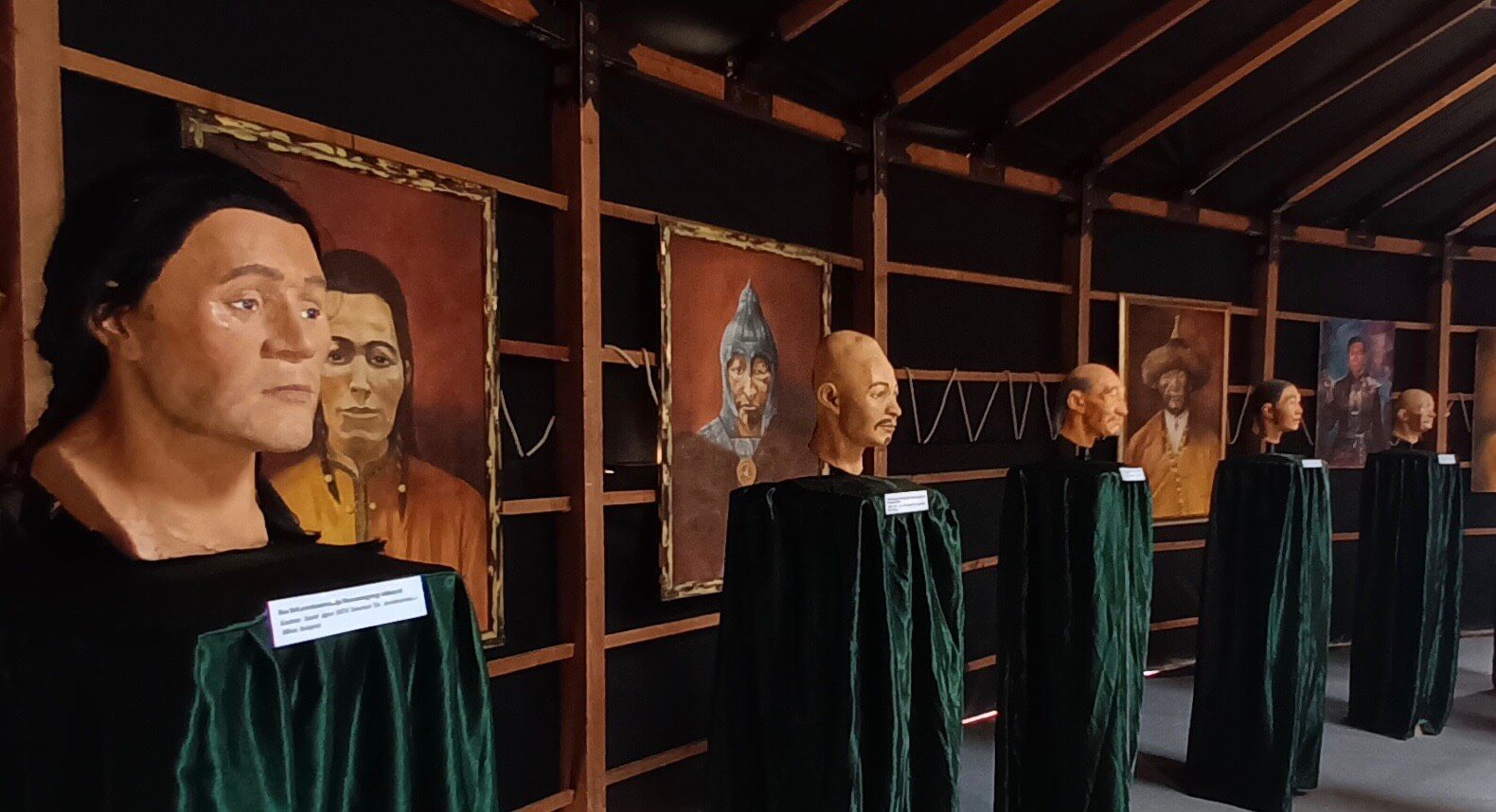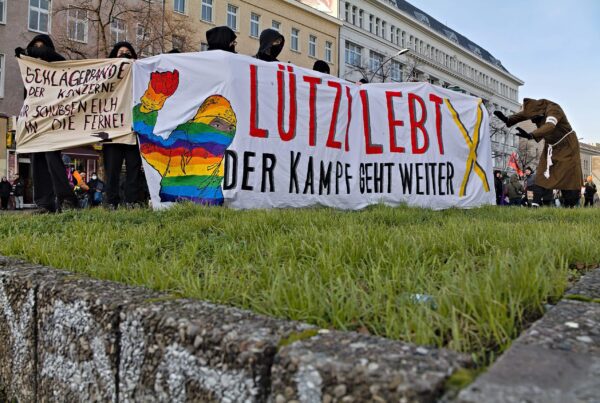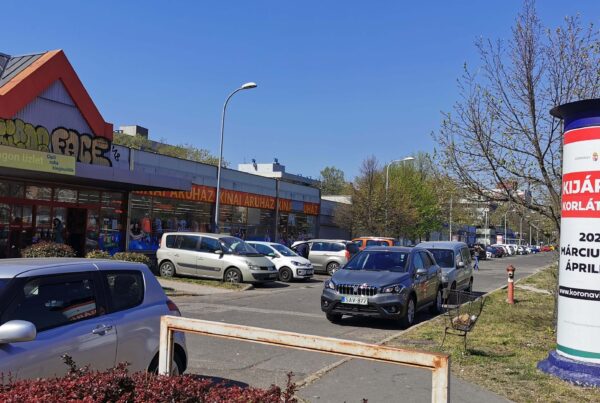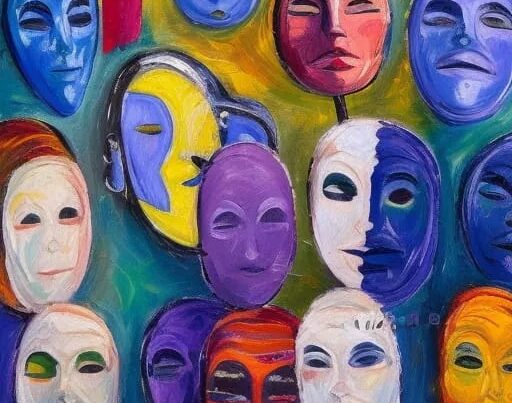This paper investigates the role of culture in the making of illiberal hegemony in Hungary from 2014 to early 2023, in particular the political project of engineering, institutionalizing, and disseminating a Eurasian civilizationist narrative in national cultural heritage and popular culture. Rather than offering a culturalist account—which cannot explain the stability of illiberal hegemony in a former constitutional democracy in East-Central Europe where, before 2010, the majority of the population backed democratization (Scheiring and Szombati 2020, Scheiring 2020)—I argue that Orbanomics (Scheiring 2020) and Hungary’s Eastern Opening Policy are accompanied by a new, still understudied project of Eurasian cultural nation-branding.
Taking an approach informed by scholarship on the popular culture of Neo-Nationalism (Feischmidt 2014), mainstreaming the extreme (Feischmidt and Hervik 2015), and ethno-traditionalist inclusion and racial exclusion (Feischmidt & Szombati 2017), I argue that the advent of Eurasian civilizationism has added a whole new dimension of ethno-/racial politics in which the natural sciences (archaeogenetics, bioarchaeology, and archaeology) play a central role.
My descriptive analysis starts with the mainstreaming of a far-right cultural heritage event; moves through the institutionalization of the Eurasian narrative in Hungarian state museums, popular heritage culture, and the educational system; and traces the project’s regional expansion and Eurasian connections. This new Hungarian project of civilizational nation-branding is clearly engineered to be an integral part of the new emerging pan-Turkic geo-economic block.
In 2007, far-right actors on the fringe of Hungarian academia started revitalizing Hungarian Turanism (Ablonczy 2022)—understood here as the belief in a shared ethnic link with people of Turkic descent—at a cultural heritage festival called Kurultáj, or tribal assembly. In 2010, the promotion of Turanism was taken up by the Orbán government, and since 2019 it has been institutionalized in new illiberal scientific institutions, which have become instrumental in furthering Hungary’s geo-economic alignment with Turkey, Central Asia, and China. Showcasing combat, archery, and horse-race re-enactments in which 500-600 re-enactors participate on horseback and on foot, national and international ethno-sports competitions, neo-pagan rituals, nationalist rock music, and Hungarian and Eurasian folklore concerts and performances, Kurultáj resembles popular medieval festivals all over Europe, but in larger dimensions, attracting 150,000-200,000 visitors over a long weekend.
Kurultáj is also a platform for popular sciences education, presenting the culture of nomadic Eurasian warriors in a framing of archaeological patriotism (see Laruelle 2021), in displays provided by the Hungarian Natural History Museum, regional archaeology museums, and since 2022 the Hungarian National Museum. The new Eurasian “ancestors” are represented as “Europid-Mongolid” racial types, with archaeological crania and facial reconstructions prepared by the Hungarian Museum of Natural History. A wide range of reenactment groups and heritage communities informed by experimental archaeology projects perform the combat and cultural techniques of nomad warrior military elites considered relevant for Hungarian military history and historical Hungarian statehood, dating back to the Huns and Avars (see Kremmler 2023). This allows the Hungarian government to integrate two seemingly conflicting civilizationist agendas: that of white Christian Europe as “real Europe” (Bassin 2022) and Eurasian civilizationism for geo-economic, cultural, and scientific co-operation with Turkic Muslim states. Since 2014, the content and aesthetics of these heritage events in Hungary have been clearly informed by major cultural heritage sites and events in Central Asia and Turkey: the National Museum in Astana, the Spirit of Tengri music festival in Kazakhstan, and the World Nomad Games(see Pelkmans 2022) in Kyrgyzstan.
As Aurélie Stern has shown in her ethnographic study of the Turkish delegations at Kurultáj 2021 and 2022, the festival serves as an intermediate space for the circulation of conservative ideas at transnational level. It is a space for the construction of a transnational conservative identity, where religious differences are resolved through Tengrism (see Laruelle 2007) as a shared ancient religion evoked in shamanic ceremonies (Stern 2022).
In the context of Turkish Eurasianism, Kurultáj is referred to as one of the biggest Turanist events. Since 2014, there have been many Turkish visitors, while the cultural stage is sponsored by the Turkish Cooperation and Coordination Agency (TIKA). Links to the new (Pan-)Turkic History Museum and Statue Park in Ankara can also be demonstrated.
Since the event’s inception in 2008, the volunteers providing event security have been a regional branch of the Magyar Gárda Mozgalom (New Hungarian Guard Movement), a legal successor organization of the far-right paramilitary Hungarian Guard that was disbanded in 2009. Every other year, the organizing body (Magyar-Turán Foundation, Magyar-Turán Alapítvány) hosts a smaller, “domestic” event called Ősök napja (Day of Ancestors)that caters to ethnic Hungarians in the neighboring countries of the “Carpathian basin,” the historical kingdom of Hungary in its pre-1920 borders that represents its ethno-national space.
In 2014–2022, I observed the once-strong far-right presence at Kurultáj and Ősök napja decline while government delegations from Turkey and Central Asia became more prominent, their television teams covering the event. Along these lines, the internationally renowned Kazakh Ethno Folk Ensemble “Turan” has performed at several Kurultaj festivals since 2010.
The Orbán government has increasingly embraced the festival since 2010. The opening ceremony is regularly held at the Parliament Building, and speaker of the National Assembly László Kövér delivered the welcome address at the event site in 2018 and 2022. In recent years, the government has provided the festival with around 1 million Euros per year in funding.
Kurultáj’s target domestic audience encompasses a broad spectrum, from “ordinary” families, to individuals performing with their respective cultural or sport associations, to far-right politicians and individuals displaying explicit far-right affinities. Hungarian society is said to be polarized to a “pernicious” degree; the polarization between liberal and national camps is about not only political affiliations, but also notions of national culture and cultural belonging. It is important to note that the so-called “national camp” is not unified in terms of political party affiliations and cannot be assumed to be pro-government. One aim of the new Eurasian project is to integrate and unite the “national camp” in meta-political, cultural terms.
In 2022, international guests of honor at Kurultáj included Binali Yildirim, former Prime Minister of the Republic of Turkey; Baghdad Amreyev, President of the Organization of Turkic States; Mehmet Süreyya Er, President of TÜRKPA; Azamat Zhamankulov, Minister of Culture, Sports and Information of Kyrgyzstan; Avazjon Karimov, Deputy Minister of Sports and Tourism of Uzbekistan; Sultan Raev, President of TÜRKSOY; and President of the World Ethnosport Confederation (WEC) Necmeddin Bilal Erdoğan, a son of the Turkish president. Besides high-ranking government and cultural delegations, the regular presence of Turkish far-right politicians and movements is also documented (Stern 2022). Sinan Oğan from the Nationalist Movement Party (2011-2017) has attended since at least 2016 (seen here posing with András Zsolt Bíró, Kurultáj founder and head of the Magyar-Turán Foundation, in 2016).
This new Eurasian political project is not just a recent invention engineered and administered top-down. It draws on a wide spectrum of alternative prehistory narratives that have existed in the popular culture of the nationalist camp since the nineteenth century. These narratives have been modernized and streamlined for the twenty-first century thanks to the advent and rapid development of archaeogenetics, in a pattern fairly similar to what have been described as “archaeological patriotism” in Central Asia (Laruelle 2021) and “genetic ethnology” (McMahon 2020). Indeed, there are shared genealogies with Central Asian physical anthropology dating back to the 1960s (see below).
As the Orbán government has gradually taken over such state institutions of education and culture as universities, museums and scientific collections, theaters, etc., this new Eurasian narrative has come to be disseminated via museum exhibitions, state media and social media, music and theater productions, and the education system. At stake is the construction of a new hegemonic illiberal epistemic architecture (I thank Annastiina Kallius for suggesting this term). As will be shown, the Magyar-Turán Foundation has been expanding their event and exhibition activities to neighboring countries since the 2020 Trianon Centenary.
The Concept of Ethnogenesis
A central component of Kurultáj are displays of archaeological crania and facial reconstructions of “Europid-Mongoloid” racial types, provided by scientists affiliated with the Hungarian Museum of Natural History in Budapest (HMNH). Kurultáj’s founder, András Zsolt Bíró, is a trained physical anthropologist affiliated with the HNHM. The event’s founding narrative was his research into the presumed kinship between “Magyars” and the tribe of the “Madjars” in the Torgay region of Kazakhstan. The study, published in the American Journal of Physical Anthropology (2009), claims only a possible relation between the two samples, but its findings have been communicated in Hungary as hard proof that the paternal branches of (a small sample of) “Hungarians” in Hungary (obtained through sampling procedures obscure to the external reader) and “most of the Madjar men in Torgay” had met at some point in time. This study set everything in motion.
Bíró’s search for genetic relations drew on older research from his own discipline. In the 1960s, physical anthropologist Tibor Tóth, then director of the HMNH’s anthropology department, deployed Soviet craniometric methods developed to study the USSR’s Asian populations to study archaeological crania from Hungary.
Grafted onto the interwar literature, these methods became standard practice to determine “Asian migrant components” in archaeological skulls from burial sites in the Carpathian basin, and remain so to this day. Tóth conducted research in the Torgay region in 1965 and published his claims of shared ancestry in 1966. These were later picked up by nationalist actors within Hungarian Turkology.
As Bíró himself states on the Kurultáj website, he was invited by Kazakh anthropologist Orazak Ismagulov on a research visit to the Central State Museum in Almaty in 2005, where he was introduced to the anthropological and historical literature of Kazakhstan and Central Asia. When the so-called Madjar tribe of the Torgay region was discussed along the lines of comparing bones from different historical periods in 2006, he joined the expedition to the tribe’s territory, took samples, and compared them to a Hungarian forensic database.
Thus, for parts of the nationalist scholarly and scientific community in Hungary, Bíró’s findings served as scientific hard evidence for previous decades of quests for ancient Eastern origins and relations by physical anthropologists, archaeologists, and orientalists.
In 2016, Biró received new scientific backing from geneticists at Szeged University. Researching ninth-century archaeological burial sites in Hungary, they identified a genetic link to Central Asia. These scientists started presenting their findings at Kurultáj in 2016, and since 2018 have published them in a number of international scientific journals. In March 2023, Bíró gave a presentation on the ethnogenesis of the Huns at the National Museum of Kazakhstan in Astana.
Illiberal Transformation of Science and Scholarship
Over time, the most prominent scientific actors at Kurultáj have all become affiliated with the new government Research Institute of Hungarian Studies (Magyarságkutató Intézet, MKI), founded in 2019. The term magyarság, innocuously translated as “Hungarian,” transports interwar ethnic semantics. Interwar “magyarság research” was an interdisciplinary national sciences paradigm of studying the nation’s body politics (nemzettest) and ancient cultural and biological origins in an approach that integrated physical anthropology, archaeology, folklore studies, ethnology, medieval history, linguistics, and orientalist studies. In physical anthropology, this involved measuring and comparing ninth-century archaeological skulls and skeletons with living populations of the post-imperial ethnic Hungarian majority in order to map the nemzettest. While most ethnic minorities were considered compatible, Hungarians with Jewish and Romani backgrounds were excluded as “alien races” on the grounds not only of racial biology, but also of their lack of autochthony as “recent” arrivals, modern-era “newcomers” to the Carpathian basin, conceived as the Magyars’ kingdom for a millennium.
MKI employees combine references to interwar authors on the medieval Hungarian chronicles with cutting-edge archaeogenetics, with the declared mission of strengthening Hungarian national identity. The institute runs on a considerable budget, employs over one hundred researchers, and has ratified cooperation agreements with most of the major Hungarian universities, as well as with Turkish scientific institutions (İstanbul Üniversitesi and Maarif Schools Hungary) and the Mongolian Academy of Sciences’ Archaeology Institute. MKI scientists publish extensively in international scientific journals and cooperations, and flood the Hungarian Science Bibliography (MTMT) with content.

MKI addresses the public through (pro-)government and social media, including through an agreement with Mediaworks Hungary, one of the biggest media companies in Hungary, to supply the latter with exclusive content for its (pro-)government daily newspaper Magyar Nemzet (Hungarian Nation). The MKI board sees their work as continuing the interwar Turanist tradition of science and scholarship, and gives regular accounts of the MKI’s scientific progress on M5, the cultural channel of government TV:
Between the two world wars, there was a chance of a Turanian turn to the East, which then was cut off in 1945 and during the communist period, for ideological reasons. We needed to pick up where our predecessors, these thinkers and researchers were forced to stop.”—László Tamás Vizi, MKI’s Deputy Director-General for Science, on M5’s “Ez itt a kérdés” (This Is the Question), June 1, 2022.
As of early 2023, MKI is becoming very vocal about its mission having succeeded. It claims to have “reinstated the genuine past of the nation, restoring the truths of our chronicles […] and popular consciousness, which had been expunged from history with defiant insolence by malicious adventurers of foreign origin [Habsburgs, Communists, Jews], and with sheer blunt violence in the absence of scientific facts.” (Original English text on the MKI website, February 20, 2022).
Integrating European Whiteness and Eurasian Hybridity
It seems pan-Turanist discourse and visual popular culture is generating its own form of Eurasian racial-civilizationist hybridity. At the same time, as has been widely reported, Viktor Orbán, in his annual speech at the Băile Tuşnad resort in Romania in July 2022, claimed that Hungarians “are not a mixed race” and that countries where different races mixed were “no longer nations.” Under his leadership, he said, Hungary would fight racial mixing because “we do not want to become a mixed race.”
Asked for comments, some participants in Kurultáj 2022 displayed surprising anti-racist awareness and cultural openness, and voiced quite critical opinions: obviously, the Prime Minister was unaware of the Hungarians’ ancient origins; his statement was as unfortunate as it was racist “against our own kin.”
Of course, the speech at Băile Tuşnad was whiteness talk addressed to fellow Hungarians in Romania. To other audiences and for other purposes, Orbán has employed Eurasianness talk of Hungarians as a “half-Asian nation” since as early as 2012.
It should also be noted that Orbán’s speech was in accordance with current Hungarian biology textbook knowledge. Racial classification remains an uncontested part of the curriculum of physical anthropology in Hungary, as well as of the school curriculum. The “Europid, Mongoloid, Negroid, [and] Australid” types were included in the new fifth-grade science and ninth-/tenth-grade biology textbooks published by the Ministry of Education in 2020.

There is a temporal dimension to racial mixing as mapped here. Mixing between the “great races” is alleged to have produced “transitional races,” as distinct from “modern-era mixed forms” (újkori keverékformák): “mulatto, mestizo, zambo.” On this map, the “Europo-mongolid transitional race” is the only hybrid form for Europe and Eurasia in the northern hemisphere. This implies a conceptual distinction between racial mixing as a result of the migration of ancient cultures (Eurasian ethnogenesis) and racial mixing as a result of modern colonialism and migration from the Global South (similar to the racist logics of anti-Arab sentiment in Turkish nativist discourse).
Of course, Orbán’s whiteness talk refers to the latter. And as Boróka Parászka has noted, this is preparing for a new dimension of “ethnic” economic policy: Viktor Orbán, referring to Hungarian communities beyond the borders as “populations” from which the missing Hungarian workforce can be replaced—as opposed to “foreign populations”—gives a very concrete meaning to demotion, disenfranchisement, and discrimination on racial and ethnic grounds (Parászka 2023).
Culture War and Cultural Mainstreaming
The government’s illiberal culture war rhetoric is explicitly theorized by intellectuals from government think tanks, drawing on a synthesis of Antonio Gramsci’s concept of hegemony, right-wing political theorist Carl Schmitt’s friend-enemy distinction, and even postcolonial authors (see Kołodziejczyk and Huigen 2023:15). One hub of government intellectuals is the journal Kommentár. Chief editor Márton Békés, head of research at the House of Terrormuseum in Budapest, authored a popular culture war manual (Culture War, 2020); the text on its back cover reads, “Everything begins in culture, happens through it and returns to it. Whoever recognizes the hegemony of culture and can develop his own hegemony in it will eventually win everything. The acquisition of a cultural majority will sooner or later lead to the emergence of a political majority. This book is a guide to why and how to conquer the cultural sphere that underpins politics. In other words, it is about the theory and practice of the struggle for cultural power and how to create cultural hegemony.”
This domestic culture war is fought to break what the regime considers the remaining hegemony of liberal urban intellectual and academic circles affiliated with the previous regime in the field of culture and academia.
In 2019, physical anthropologist Zsolt Bernert, one of the scientists who had prepared the anthropology displays at Kurultáj since 2010, was appointed the new director of the HNHM. His first project was to display the narrative of Hun-Avar-Magyar ancestry in the exhibition Attila Örökösei—A hunoktól az Árpád-házig (Attila’s Heirs: From the Huns to the House of Árpád, October 2019). In 2021, László L. Simon, a Fidesz MPand former state secretary for culture, who is a writer and poet by profession, was appointed as the new director-general of the Hungarian National Museum (HNM). Simon is part of the editorial board of Kommentár, which since his appointment as director-general of HNM has been presenting new issues in the Hungarian National Museum on a regular basis (Issue 2022/1, 2022/3 Conservative Revolution, Issue 2023/1 Magyar World).
In 2022, the HNM had its own exhibition yurt at Kurultáj for the first time. Several HNM archaeologists also presented in the science tent. The new Eurasian narrative has been established and institutionalized to a point that it can integrate the scholarship of individuals whom even critical Hungarian scholars consider to be legitimate academic actors not known for illiberal affiliations or nationalist leanings. At this point, long-time festival audiences are disposed to embrace any new information about Eurasian nomad peoples past and present as part of Hungary’s civilizational heritage and national identity.
The new narrative is disseminated via school textbooks, projects of national pedagogy outside the public school system, and the wide range of traditionalist cultural and sports organizations founded and/or supported by the government over the last decade. In 2021, an ethnosport federation was established, under the leadership of András Zsolt Bíró, to ensure regular Hungarian participation in the World Nomad Games. Hungarian equestrians were introduced to Köböre/kökpár as the ancient sport of Hungarian shepherds on the Great Hungarian Plains. A range of historical combat sports and re-enactment groups covering the fifth century to the early modern period regularly perform at a number of public events and in film productions.

(by Levente Szörényi and János Bródy), premiere 2020
As the cultural institutions are taken over by Fidesz actors as part of their effort to establish illiberal cultural hegemony, designs and motifs inspired by “ancient Magyar mythology,” which carry Eurasian nomadic aesthetics, are generated and fed into the cultural mainstream through the repertoires of national cultural institutions. Recent examples include the National Equestrian Theater, the Open Air Theater on Margit Island, the National Opera House (an advertisement for one of its productions reinterprets St. Stephen’s crown, the symbol of constitutional sovereignty, as a felt yurt), the Hungarian National Museum (in its 2022 exhibition “Sabretache Plates, the Treasures of the Hungarian Conquering Elite”), the Hungarian National Theater, and the Capital Circus of Budapest (“The Spirit of the Steppe,” 2023). A major feature film, 1242: Gateway to the West, a Hungarian-Mongolian coproduction, will be released in late 2023.
Eurasian nomad and ancient Magyar aesthetics are increasingly present in the public space. In 2022, the Hungarian National Bank erected a statue of a golden Miracle Deer as a new, monumental emblem of the nation’s dynamic economic recovery and expansion.
Irredentism and Expansion
Since 2020, the Magyar-Turán Foundation has been expanding its focus and activities to neighboring countries. In both Kurultáj and MKI discourse, the Eurasian civilizationist narrative of historical Hungarian statehood is always explicitly linked with Trianon irredentism (see Feischmidt 2020), to the point that the MKI’s government website quotes the irredentist, antisemitic author Albert Wass (1908-1998) (“Water runs, stone remains” from the poem “Message Home” [Üzenet haza]) and the irredentist so-called “Hungarian Creed” (Hiszekegy), the “national prayer” of the Horthy era (1920-1944) (“we believe in an eternal divine truth, we believe in the resurrection of Hungary”).
The Ősök napja festivals represent the unity of Hungarians in the Carpathian basin, and the Magyar-Turán Foundation is an active supporter of the Székler autonomy movement in Romania, with a presence at the Székler Freedom Day celebrations since 2012. In 2020, the year of the Trianon Centenary, Ősök napja festivals planned in neighboring countries were cancelled for COVID. Since 2021, Ősök napja festivals have been organized in Serbia, Romania, and Slovakia. They were held in 2021 and 2022 in Bajša/Vojvodina, Serbia, under the political term of Délvidék (literally “southern province,” referring to the southern part of the Kingdom of Hungary before 1920). In April 2023, the Magyar-Turán Foundation co-organized the first archaeological exhibition on the Hungarian Conquest era in Serbia at the Municipal Museum of Bečej (Градски музеј Бечеј), in cooperation with the Budapest Museum of Natural History.
A first Ősök napja in Romania was held in Belin/Széklerland in 2022. The first Ősök napja in Slovakia will take place in 2023 in Dunajská Streda, in co-operation with the municipality and the Žitnoostrovské múzeum. Here, the political term “Felvidék” (literally, “upper province”) is used, a reference to the northern part of the Kingdom of Hungary before 1920.
These expansions of the Eurasian narrative to neighboring countries, in co-operation with local municipal museums, all focus on areas that were returned to Hungary by the Vienna Awards (1938/1940), overruled by the 1947 Paris Peace Treaties.
Besides domestic and regional expansion of the Magyar-Turán Foundation’s activities, an interesting example of Kurultáj as an interface for Hungarian-Turkish Turanist projects can be found in the Etimesgut district of Ankara. The Turkish History Museum and Park (Türk Tarih Müzesi ve Parkı), a new open-air history museum, was founded in 2021 by the municipality and features pan-Turkic history from the Scythian and Göktürk periods up to the modern republic. It is becoming a popular educational site for the general public as well as international university students, and is used as a backdrop for cultural diplomacy meetings with Turkey’s Central Asian partners.
Among the khagan statues of the 16 Great Turkic Empires, the sculpture of Bayan I., the first khagan of the Avar Khaganate (562–602), was clearly modeled on the facial reconstruction of an Avar from the Kunbábony burial site in Hungary, which has been displayed as part of the “Hall of the Ancestors” at Kurultáj since 2014.
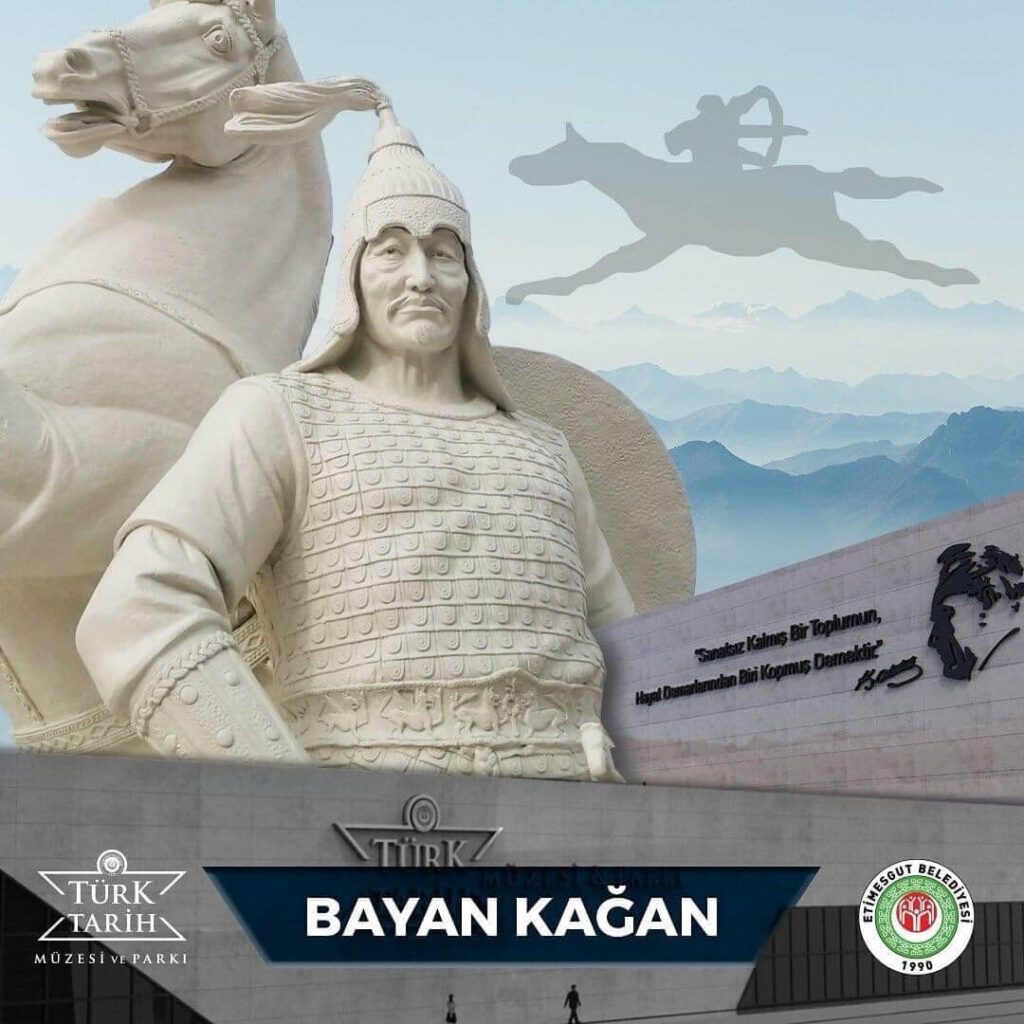
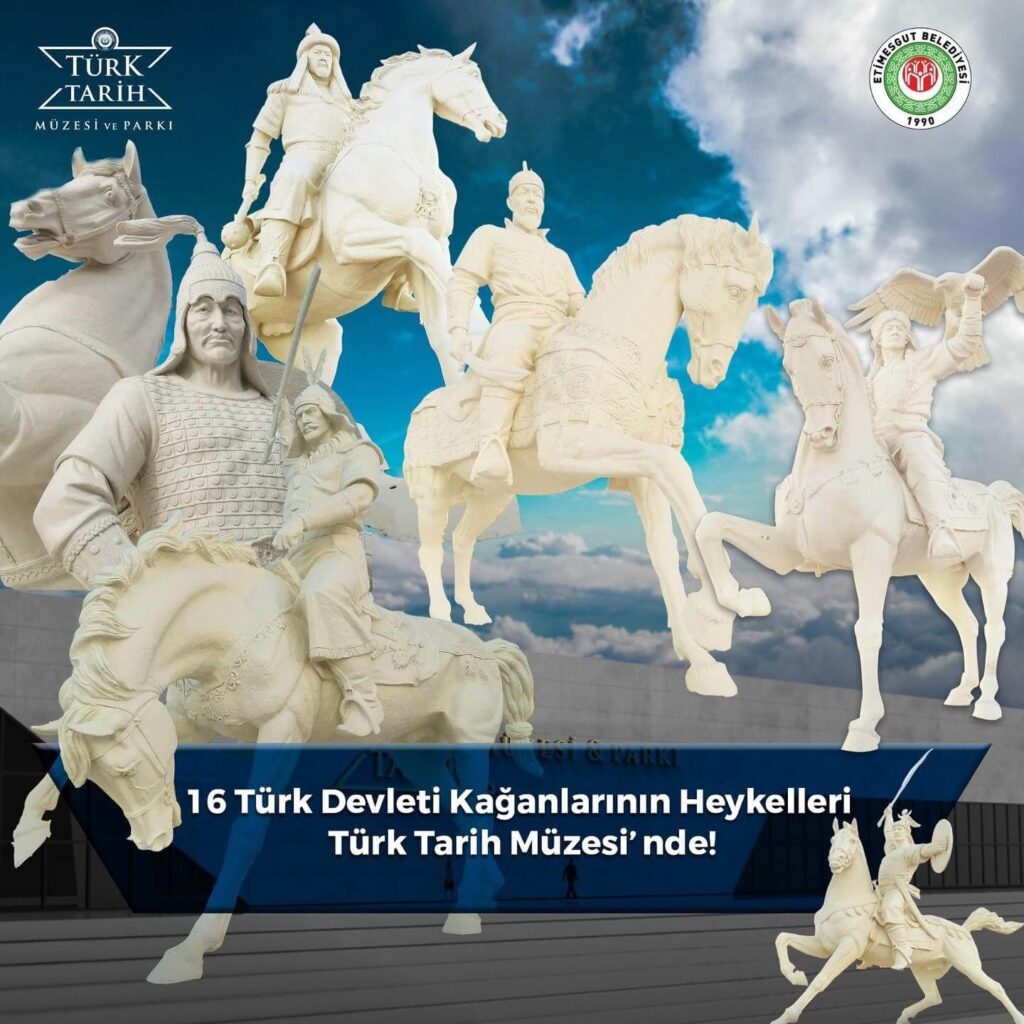
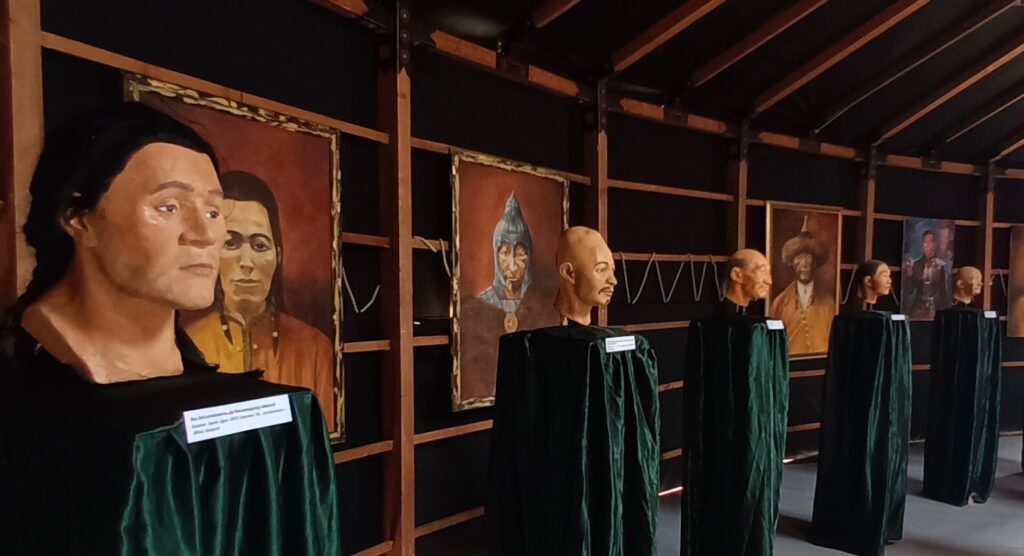

Conclusion: Eurasian Civilizationism for Illiberal Nation-Branding
While only a few years ago external observers could explain the ethno-nationalist turn in Hungarian politics by reference to an expanding ethno-nationalist cultural industry that had effectively commodified and banalized radical sentiments, as of 2023 it is clear that the illiberal regime itself is the major ethnopolitical entrepreneur (Brubaker 2004), building its civilizationist project on new national sciences and working with a range of embedded popular cultural heritage movements and communities. The Orbán government won another term in 2022 and clearly has long-term plans. At stake is a fast-evolving process of illiberal cultural politics and the construction of a new hegemonic illiberal epistemic architecture.
Such uses of national culture and heritage for illiberal nation-branding projects should be seen in the broader context of global emerging (semi-)peripheries. Looking at the Indian case, Ravinder Kaur describes the development of the twenty-first-century nation-as-investment-destination phenomenon, entailing “a full capitalization (transformation) of the nation into an income-generating asset: a new imaginary of the national territory as an infrastructure-ready enclosure for capital investment, its cultural identity distilled into a competitive global brand and its inhabitants—designated as demographic dividend—income-generating human capital […]. This internalization of the market logic reconfiguring the nation state into an enclosed commercial-cultural zone” (emphasis mine) is what Kaur calls “the brand new nation: the nation revitalized and renewed as a profitable business enterprise with claims to ownership over cultural property within its territory” (Kaur 2020:8).
And this new Hungarian project of civilizationist nation-branding clearly aims at expansion on two fronts: the current borders of Hungary and as an integral part of what is considered the emerging pan-Turkic geo-economic block.


